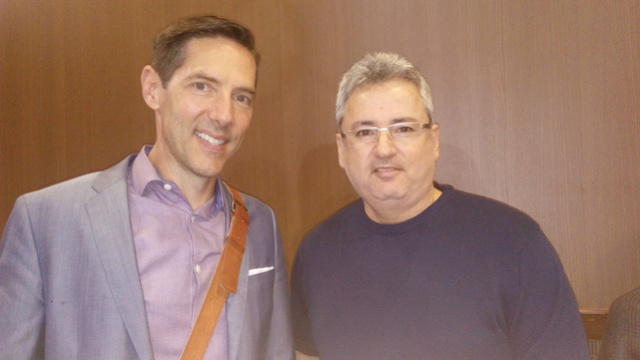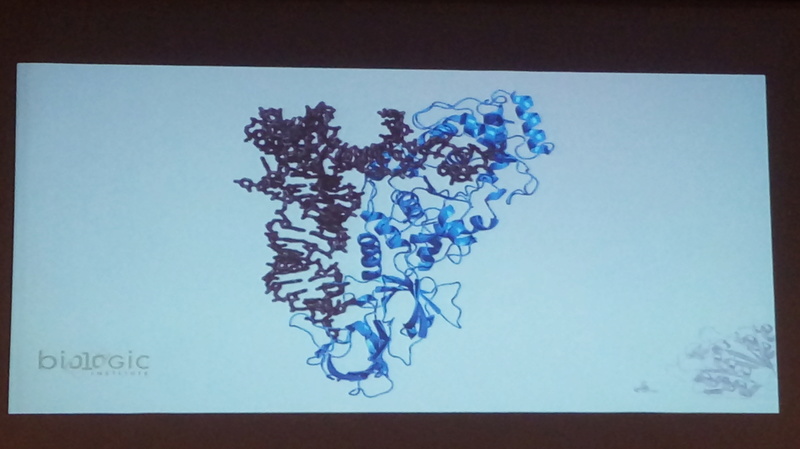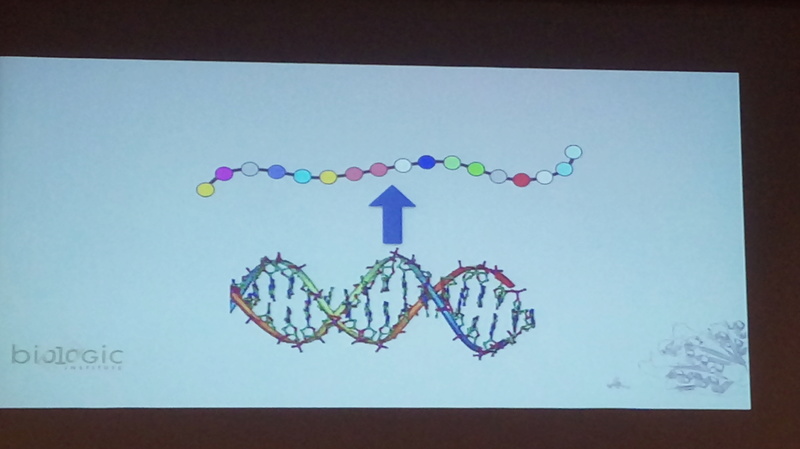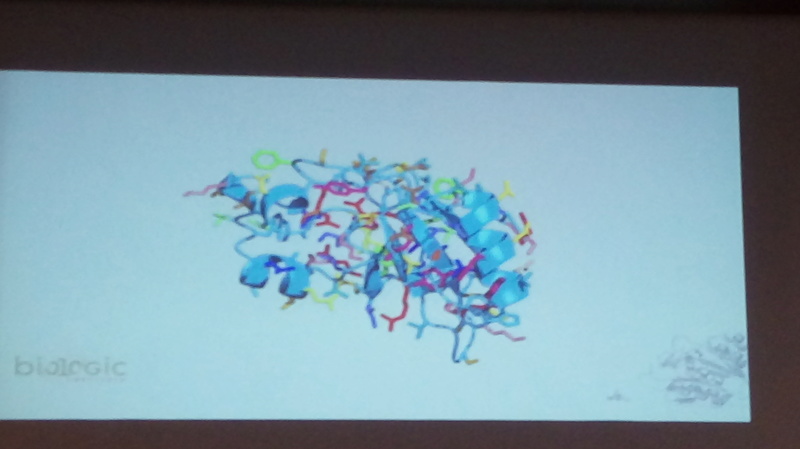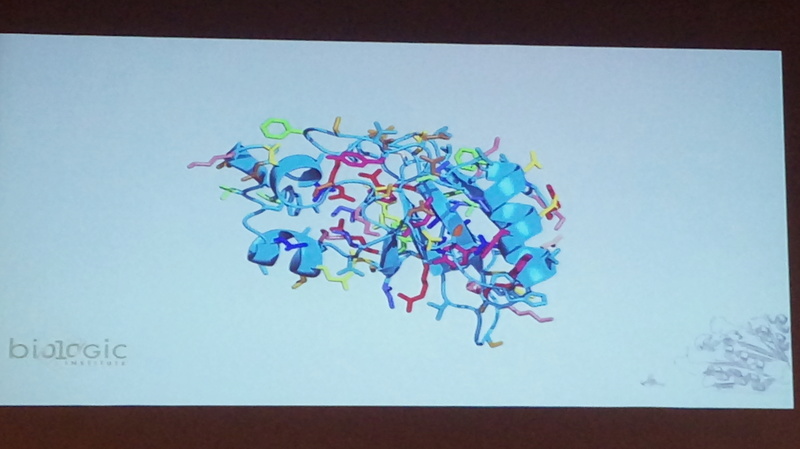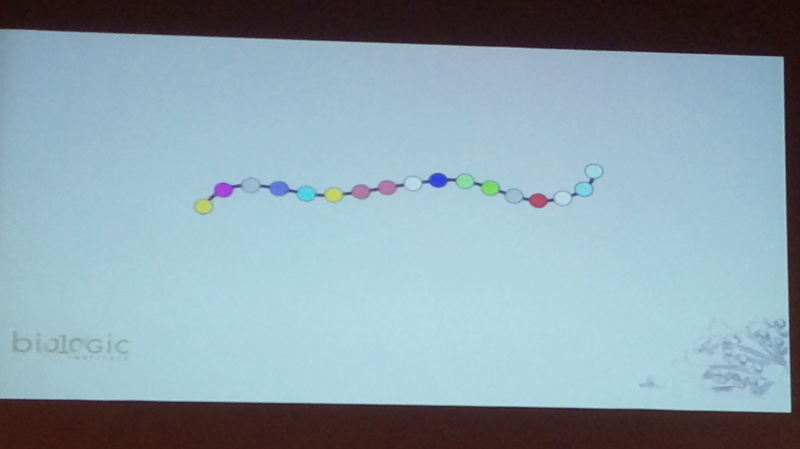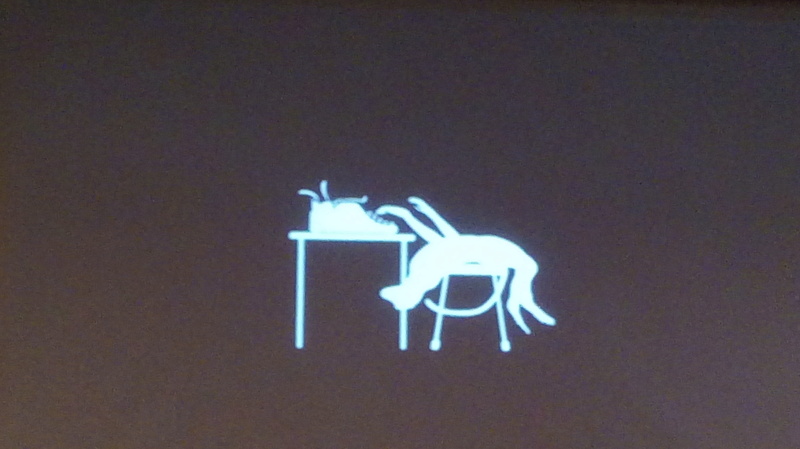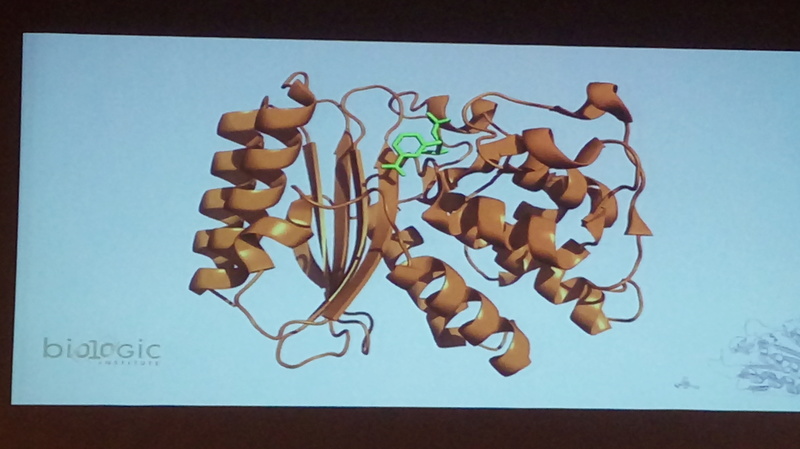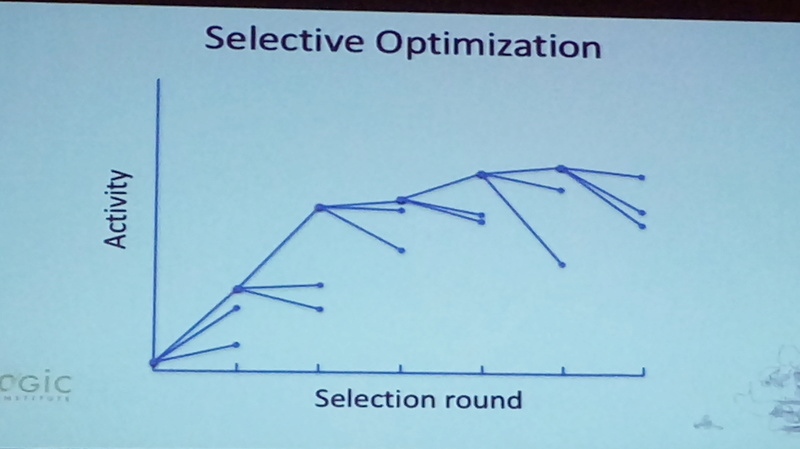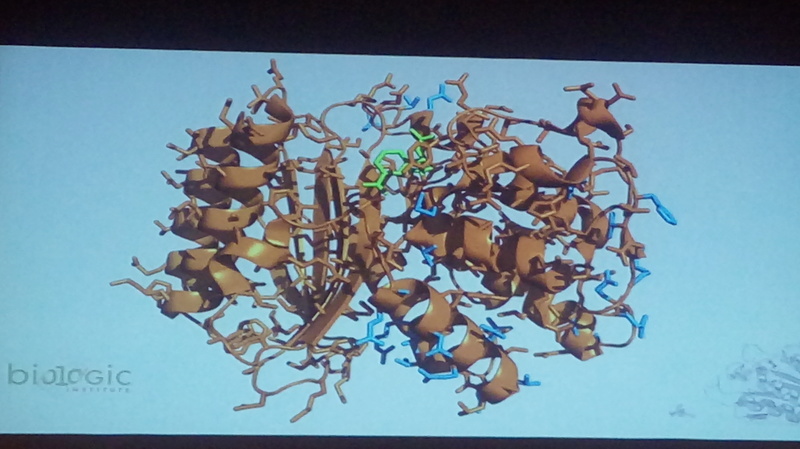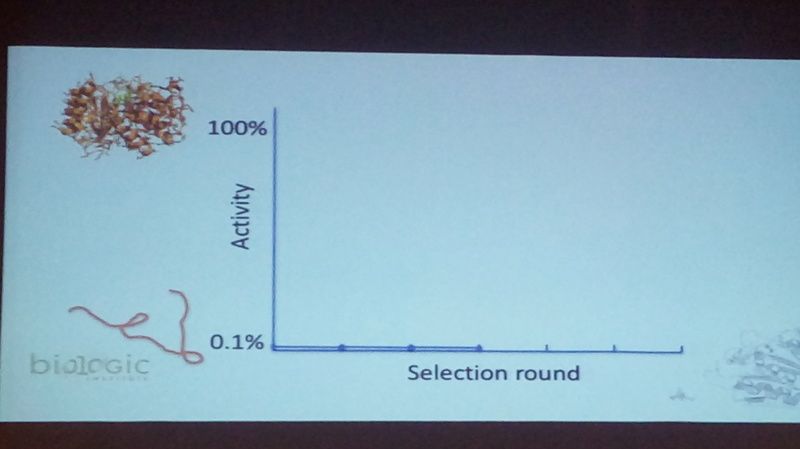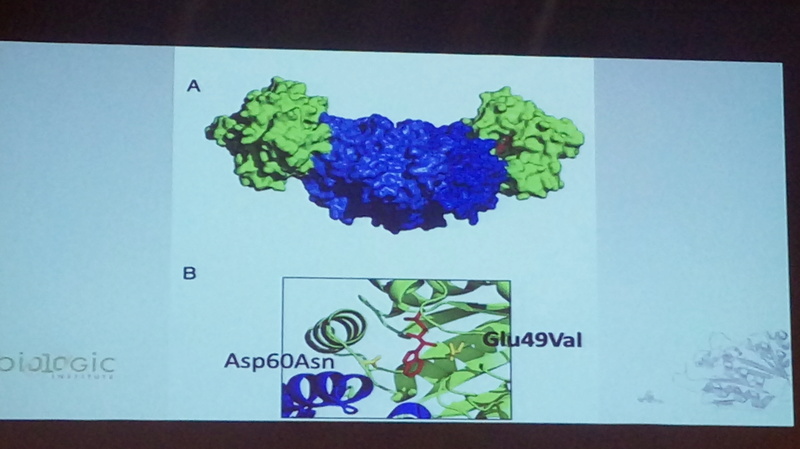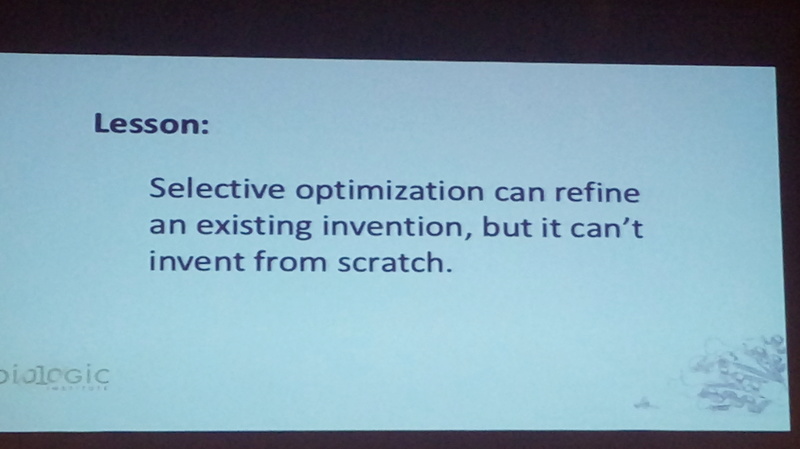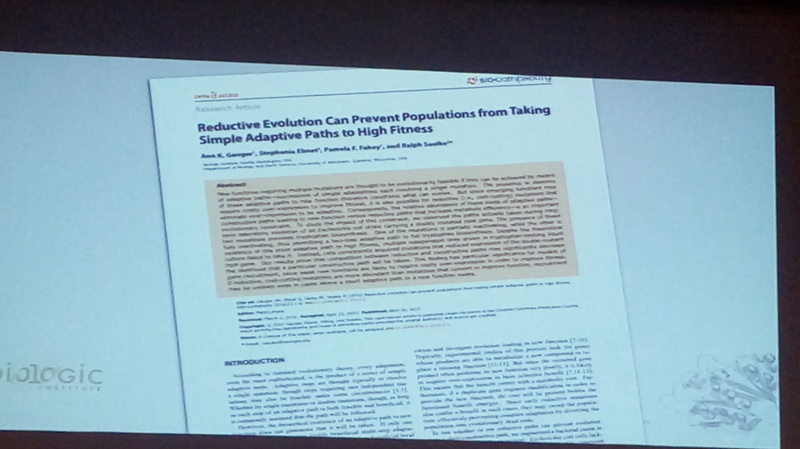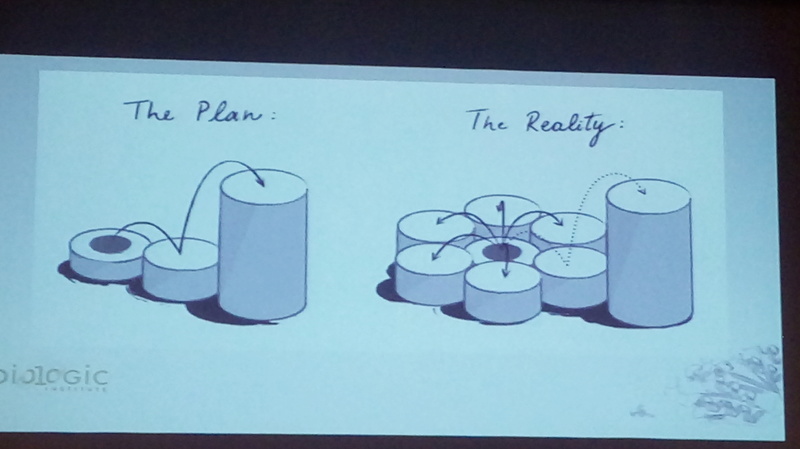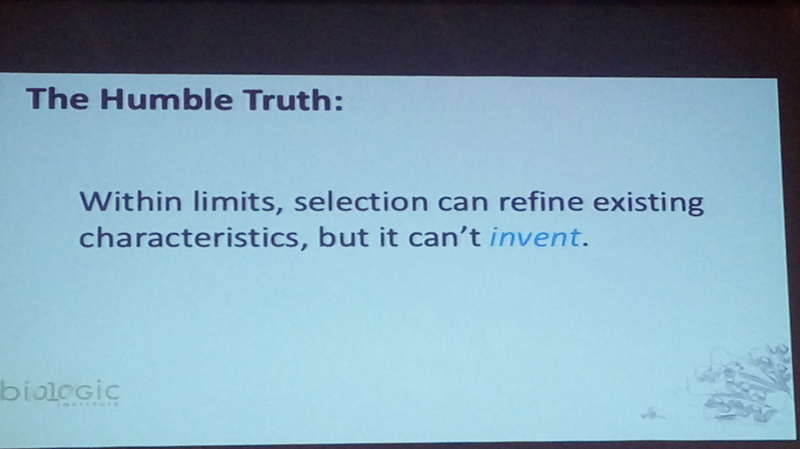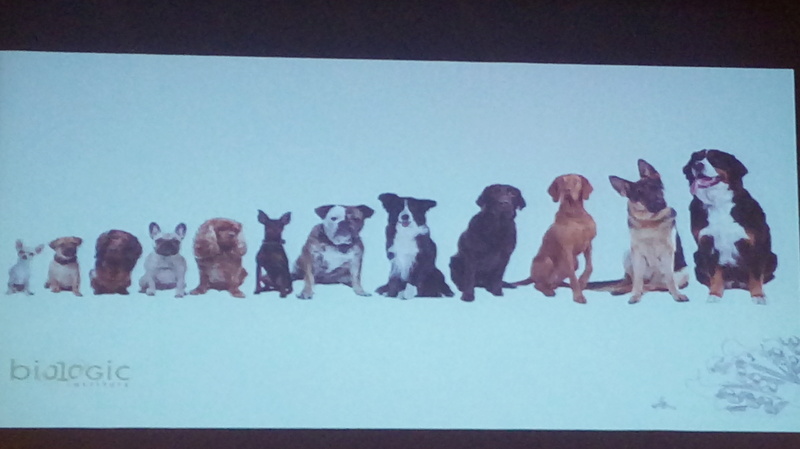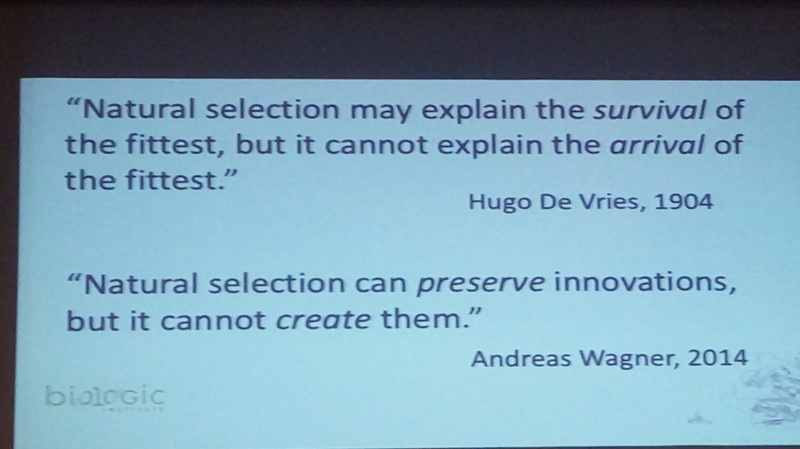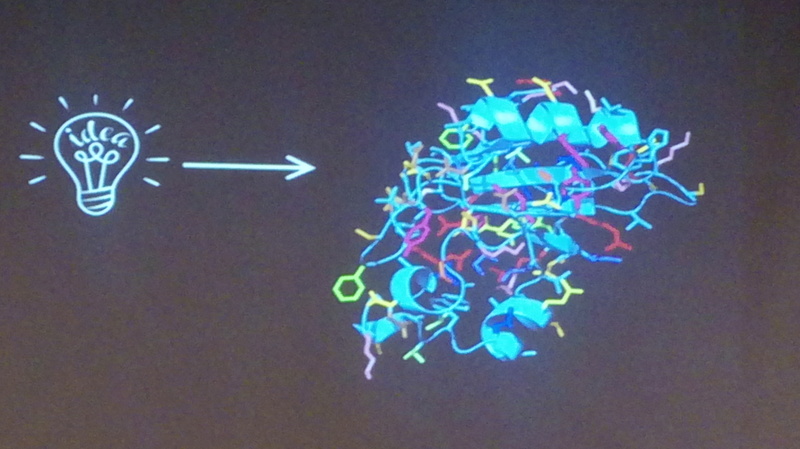Douglas Axe, Undeniable, page 89:
Although Cyanobacteria are single-celled organisms, the individuals of some species adhere to one another to form long filaments that interweave into huge mat-like colonies in stagnant or slow-moving water. They are, quite literally, the pond scum of the earth. Every cyanobacterium houses an entire manufacturing plant within its microscopic walls. Powering all the operations of this plant is the process known as photosynthesis, which
converts light energy into chemical energy. Much of this chemical energy is used to make sugar molecules from CO2 and water, giving off oxygen (O2) as a by-product. Sugar is, therefore, energy rich, which means that cells can “burn” it for calories. Alternatively, sugar serves as a versatile carbon compound cells can use to build the huge variety of other carbon-rich molecules needed for life. Although we think of photosynthesis as a natural process, in the sense that it’s happening all around us in nature, in another sense it is very unnatural. More than any human invention, photosynthesis is an ingenious exploitation of the natural regularities of the universe, radically different from anything those regularities produce on their own. To grasp this, think of photosynthesis as the reverse of burning fuel, because that’s what it amounts to. Burning is a very natural process,
whereas unburning is not. With just a spark to get it going, oxygen readily consumes fuel molecules like sugars in its flames, forming CO2 and gaseous water. By doing just the opposite, photosynthesis earns a position as one of those clever inventions, like air-conditioning, that harnesses natural regularities in order to work against them. And of these two inventions, photosynthesis is more clever by far.
The challenge for me is to give a sense of this without giving the equivalent of two or three chapters of textbook biochemistry. Thankfully, that can be done in much the same way that a wonderful book called Stephen Biesty’s Incredible Cross-Sections gives us a sense of the engineering complexity of things like rescue helicopters and space shuttles. Biesty artfully cuts the exterior away to show us how all the parts are arranged inside. Let’s use a similar approach with photosystem I, one of the major components of the cyanobacterial photosynthetic apparatus. The parts list for this engineering marvel (Figure 10.2) shows twelve protein parts and six smaller parts called
cofactors, one of which (chlorophyll a) is used 288 times to build the full photosystem.
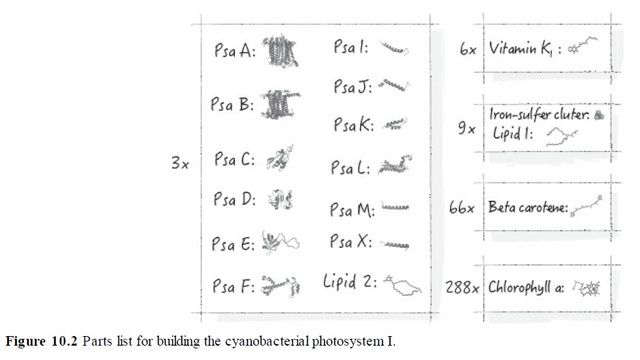
These essential cofactors are held in their precise positions by the large protein framework, as shown in Figure 10.3
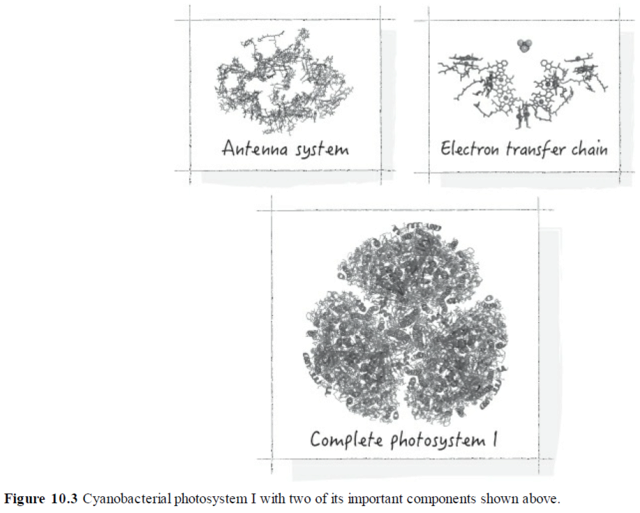
1. http://pubs.rsc.org.sci-hub.cc/en/content/articlelanding/2012/fd/c1fd00078k#!divAbstract
The very fact that the terms electron transfer chain and antenna system are used by the scientists who study photosystem I tells us that this photosystem’s overall function involves multiple subfunctions, including the transfer of electrons and the collection of photons by an antenna. If you do decide to delve into the technical literature, you’ll find a host of other functional descriptors, including docking site, primary electron donor, initial electron acceptor, and quenching carotenoids. Even if most of us have no clue what these terms mean, we all see that the high-level function of photosystem I depends on an extensive hierarchy of lower functions, and that should seem very familiar. This is another example of hierarchical functional coherence, made particularly striking by the tiny scale on which it has been implemented. As always, we immediately perceive this pattern to be a signature of purposeful invention. As complex as photosystem I is, it’s only one component of the many that make up the whole photosynthetic system. Figure 10.4 gives us an idea of how complex this whole system is.
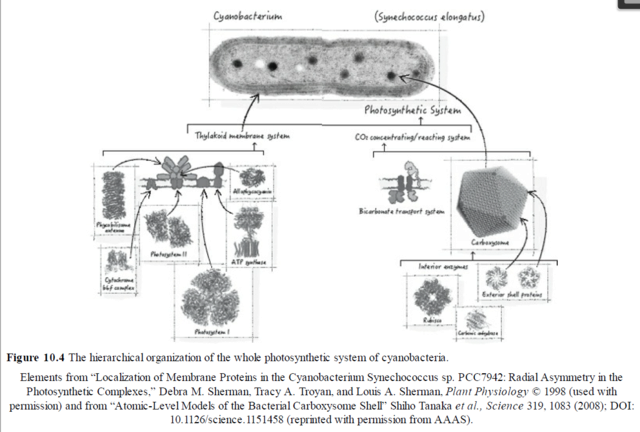
Topping the hierarchy is the cyanobacterial cell, shown as an actual cross-sectional image taken with an electron microscope. Below that is the photosynthetic system, which, though it is shown alone, is just one of many systems needed to support the top-level function of living life as a cyanobacterial cell. At the next level down, the photosynthetic system is composed of two components: the thylakoid membrane system and the CO2-concentrating/reacting system. The first of these is responsible for harvesting light energy and converting this into chemical energy. The second is responsible for using this chemical energy to “unburn” CO2. The major structures associated with both of these component systems are large enough to be visible in the image at the top. The concentric bands seen around the perimeter of the cell are the layers of light-catching thylakoid membrane. The large dark spots inside the cell are the carboxysomes, the reaction vessels in which the unburning takes place.
